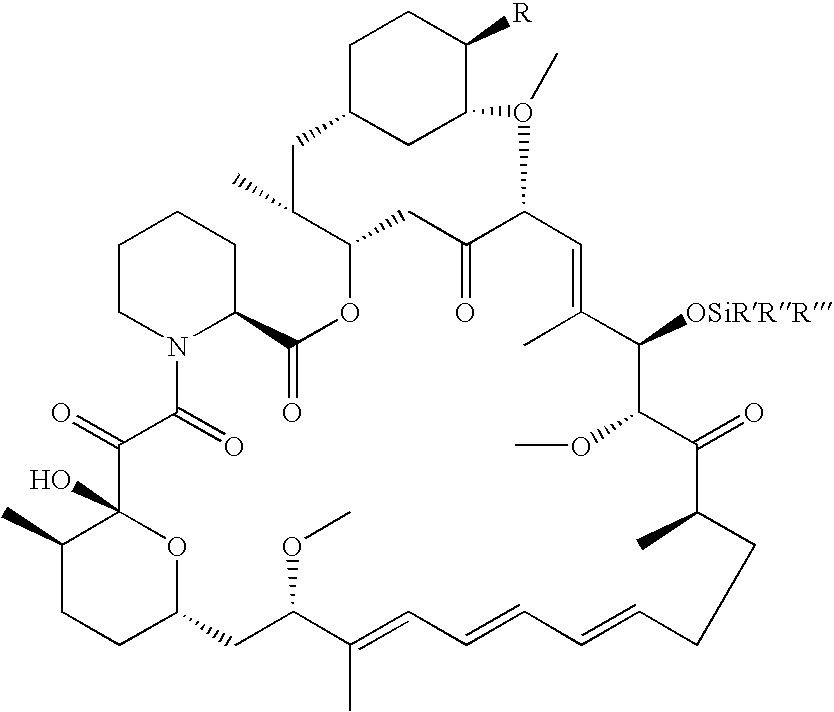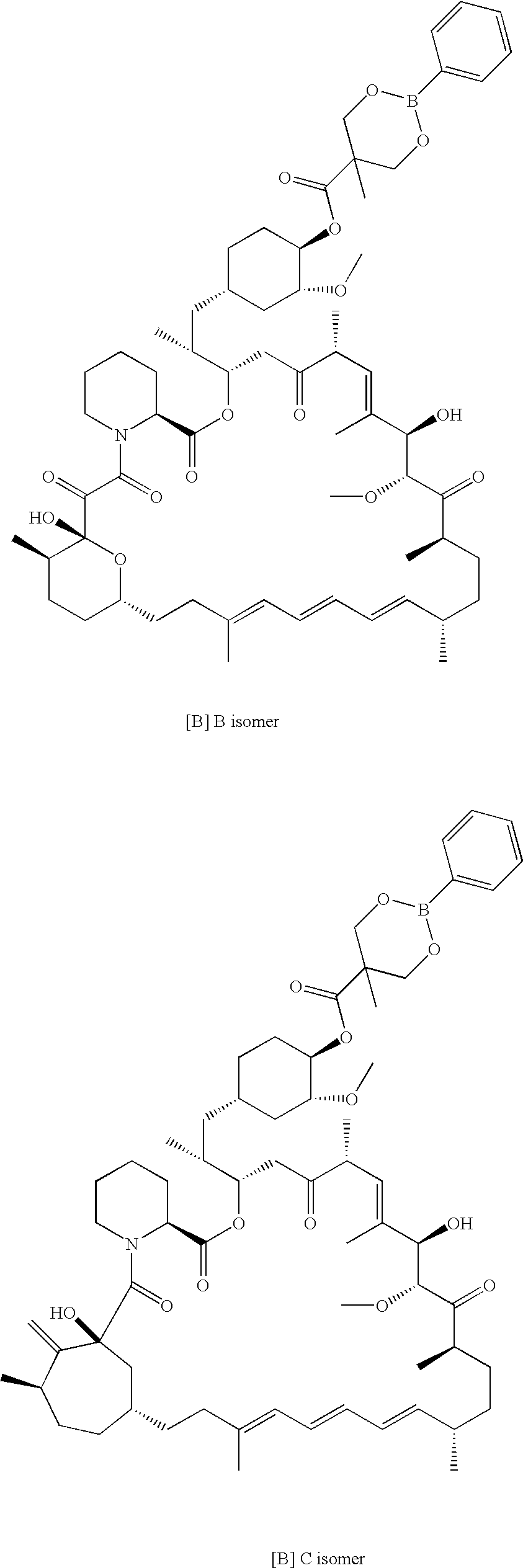Regioselective synthesis of CCI-779
a synthesis and synthesis technology, applied in the field of ccl779 synthesis, can solve the problem of complex synthesis, and achieve the effect of improving the synthesis efficiency and reducing the synthesis difficulty
- Summary
- Abstract
- Description
- Claims
- Application Information
AI Technical Summary
Benefits of technology
Problems solved by technology
Method used
Image
Examples
Embodiment Construction
[0012]The present invention provides a regioselective synthesis of a 42-ester of rapamycin by acylating a rapamycin 31-silyl ether with a compound of formula
HOOC.CR7R8R9
or a mixed anhydride thereof, wherein:[0013]R7 is hydrogen, alkyl of 1–6 carbon atoms, alkenyl of 2–7 carbon atoms, alkynyl of 2–7 carbon atoms, —(CR12R13)fOR10, —CF3, —F, or —CO2R10;[0014]R10 is hydrogen, alkyl of 1–6 carbon atoms, alkenyl of 2–7 carbon atoms, alkynyl of 2–7 carbon atoms, triphenylmethyl, benzyl, alkoxymethyl of 2–7 carbon atoms, chloroethyl, or tetrahydropyranyl;[0015]R8 and R9 are taken together to form X;[0016]X is 2-phenyl-1,3,2-dioxaborinan-5-yl or 2-phenyl-1,3,2-dioxaborinan-4-yl, wherein the phenyl may be optionally substituted;[0017]R12 and R13 are each, independently, hydrogen, alkyl of 1–6 carbon atoms, alkenyl of 2–7 carbon atoms, alkynyl of 2–7 carbon atoms, trifluoromethyl, or —F; and[0018]f=0–6; to give a 42-ester boronate 31-silyl ether of rapamycin.
[0019]Thereafter, the rapamycin 31...
PUM
| Property | Measurement | Unit |
|---|---|---|
| temperature | aaaaa | aaaaa |
| temperature | aaaaa | aaaaa |
| temperature | aaaaa | aaaaa |
Abstract
Description
Claims
Application Information
 Login to View More
Login to View More - R&D
- Intellectual Property
- Life Sciences
- Materials
- Tech Scout
- Unparalleled Data Quality
- Higher Quality Content
- 60% Fewer Hallucinations
Browse by: Latest US Patents, China's latest patents, Technical Efficacy Thesaurus, Application Domain, Technology Topic, Popular Technical Reports.
© 2025 PatSnap. All rights reserved.Legal|Privacy policy|Modern Slavery Act Transparency Statement|Sitemap|About US| Contact US: help@patsnap.com



